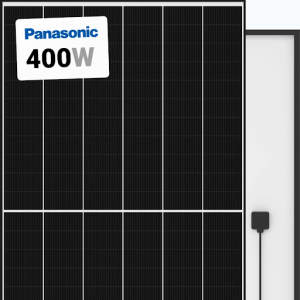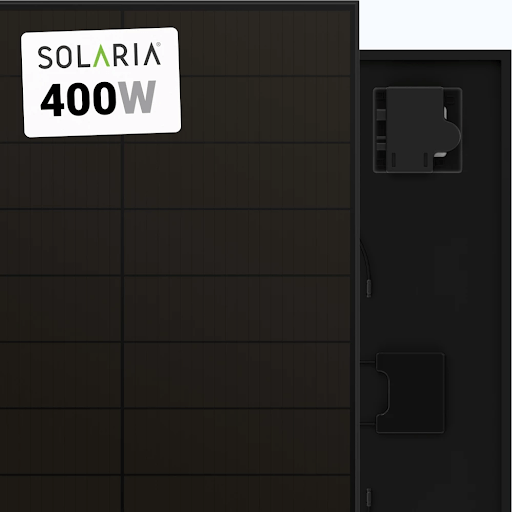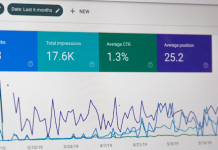As the demand for renewable energy solutions grows, so does the variety of solar panels available for residential use. To save you from the agony of choosing, here we explore the best solar panels for home, factors affecting their efficiency, and the key considerations when selecting the ideal solar panels.
Table of Contents
5 best solar panels for home
Choosing the best of the best is difficult, but we have done the job and introduce here the top 5 best panels for the home:
Solaria PowerXT-400R — Best looking
Solaria manufactures probably the most beautiful solar panels. And it’s not just the looks: The panels’ distinctive shingled design enhances their resistance to shading by 40% compared to conventional panels. PowerXT model boasts an efficiency of 20.5% and is accompanied by 25-year warranties covering both the product and performance.
Panasonic Evervolt 400 W — Best for hot places

In regions with high temperatures, the top pick is the Evervolt solar panel by Panasonic with heterojunction technology that effectively mitigates power losses associated with blistering heat. The panel achieves 21.6% efficiency, while the average ranges between 19% to 20%. And it’s not all: Panasonic stands behind its product with a 25-year warranty and ensures that even after this period, performance will remain at 92% or higher.
Q Cells Q.PEAK DUO ML-G10+ 400 W — Best selling
Q CELLS have been the most popular choice among our clients. And it’s no surprise: These modules merge impressive specifications, exceptional quality, and a budget-friendly cost. The ML-G10+ model demonstrates remarkable performance in diverse weather conditions and looks great on any roof. This panel is further backed by 25-year warranties, encompassing both the product and performance.
REC Alpha Pure Black 405W — Best from Europe
The Alpha Pure Black by the Norwegian brand REC stands as one of the most cutting-edge solar panels available. With an impressive efficiency of 21.9%, this panel not only performs exceptionally but also boasts a sleek all-black design, making it look great on any roof. The panel maintains 92% of its power output even after 25 years of operation, and comes with a triple 25-year warranties, covering product, performance, and even labor if installed by an REC-certified professional.
Canadian Solar HiKu Black 395 W — Best in bad weather
Canadian Solar panels have been known for their exceptional performance in overcast conditions. Half-cut cell technology increases the resistance to shading, and the completely black cell surface, back sheet, and frame give the model unrivaled aesthetics. Canadian Solar provides remarkable 25-year performance and product warranties. Compared to other panels on the list, Canadian Solar 395W panels are among the more affordable ones.
What are solar panels used for?
Solar panels are used for a variety of applications:
- Residential: One of the most common applications of solar panels is in residential settings. Homeowners can install solar panels on their rooftops to generate electricity for their household needs, reducing reliance on traditional grid-based electricity and saving money with net metering.
- Commercial: Beyond residential use, solar panels can be installed on the rooftops or vacant land of factories, warehouses, and office buildings. Businesses can offset their energy costs and demonstrate a commitment to sustainability by powering offices, factories, and other facilities.
- RVs: Solar panels are also getting popular among boondockers and trailer owners. A small solar system charges the house battery of an RV that powers all the appliances inside a four-wheeled home.
What does solar panel efficiency depend on?
Efficiency refers to the amount of sunlight a panel can convert into usable electricity. It typically ranges from 13% to 23% and depends on the following factors:
- Cell type: Solar panels come in various cell technologies, including monocrystalline, polycrystalline, and thin-film. Monocrystalline cells have a higher efficiency – 18–23% – and better performance in low-light conditions, while polycrystalline panels are slightly less efficient but are 20–25% cheaper. Thin-film cells are the least efficient – 10–13% – but flexible and lightweight, making them suitable for unconventional installations.
- Panel type: Bifacial panels, due to their rear side, can demonstrate the efficiency of over 27%. However, you have to set up these modules correctly to maximize the reflectivity of a surface beneath.
- Technologies used: The technologies that a manufacturer used when building a panel, for example, half-cut cell design, PERC cells, multibusbars, can significantly increase the panel’s efficiency.
What should I look for when choosing a solar panel?
Selecting the right solar panel system for your home requires careful consideration of various factors. Here are some key aspects to keep in mind:
- Energy needs: Assess your household’s energy consumption to determine the size of the solar panel system you need. Consider your average energy usage and any future increases in demand.
- Budget: Set a budget for your solar panel system, including installation costs. While higher efficiency panels may have a higher upfront cost, they could result in greater long-term savings due to increased energy production.
- Reviews and recommendations: Read reviews and seek recommendations from homeowners who have already installed solar panels. Their experiences can provide valuable insights into the installation process, performance, and overall satisfaction.
- Local incentives: Research local incentives related to solar panel installation. Many regions offer tax credits, rebates, or other incentives to encourage renewable energy adoption.
- Available space: Evaluate the available space on your rooftop or property for installing solar panels. Different panel sizes and types require varying amounts of space.








